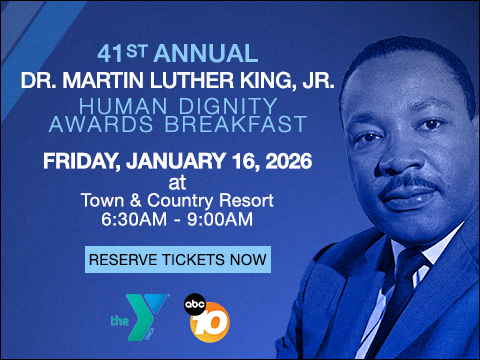SAN DIEGO (KGTV) - New numbers from the California Attorney General's Office show San Diego is leading the way when it comes to using Gun Violence Restraining Orders.
According to data released to the state's Open Justice website, San Diego County issued 483 GVROs in 2020. That's more than a third of all the GVROs issued across the state.
The state Legislature passed a GVRO law in 2016, allowing law enforcement to confiscate a gun from someone deemed a danger to themselves or others. It must get approval from a judge and can last anywhere from 21 days to five years.
At first, only family members or law enforcement could ask for a GVRO. An update to the law in 2020 allowed coworkers, employers, or educations also to request them.
Since the initial law passed, their use in California has dramatically increased, from just 85 in 2016 to 1,285 in 2020.
In San Diego County, the numbers have also seen a steep climb. In the first year, only four were issued. That jumped to 14 in 2017, 185 in 2018, 397 in 2019, and 483 in 2020.
A big reason for the increased use is San Diego City Attorney Mara Elliott.
"When I was elected, I decided I wanted to make that a priority," Elliott told ABC 10News in an exclusive interview. "It is a fantastic crisis intervention tool that's really worked for our region."
Elliott's office created a GVRO program in December of 2017. Since then, they have accounted for more than 550 of the 1,083 GVROs in San Diego County. That's nearly 1/5 of all the GVROs ever issued in the state.
Elliott says they have confiscated more than 1,000 guns, including 48 assault rifles.
"Sandy Hook happened when my kids were in kindergarten and second grade," she says. "I still remember hearing the news as I was dropping them off at school. And it occurred to me that there has to be something more we can do to protect our kids."
Elliott is also a UC Santa Barbara graduate, where a mass shooting in 2014 directly led to the GVRO law in California. She says this mission is personal.
"Every time a mass shooting like that happens, I wonder if that city was using GVROs," she says. "And, if they had, could it have been prevented."
But while Elliott calls the program a success, others call it a violation of people's Constitutional rights.
"In its present state and the way that Mara Elliott is using Gun Violence Restraining Orders, she is abusing her power," says San Diego County Gun Owners PAC Executive Director Michael Schwartz.
He says GVROs take guns away from law-abiding citizens who have done nothing wrong. He also says they're unnecessary because laws already exist to remove a gun from a criminal.
"If someone is breaking the law, you can take firearms from them," says Schwartz. "And if someone is not breaking the law, then why are we taking firearms from them?"
Schwartz also worries that people could use GVROs for spite or revenge. Elliott says doing that would be the same thing as filing a false police report and that anyone who does that would be charged.
"We don't have the resources to bring cases forward that we don't believe in or that we can't prove," says Elliott. "So we heavily vet them ourselves."
She also says all GVROs must be approved by law enforcement, her office, and a judge. They're based on evidence showing the person is a threat to harm someone.
"Typically, the signs are there in some form or fashion," she says. "Neighbors see something. A coworker sees something. Maybe there's a social media post. There's some kind of an indicator that there's a problem that needs to come to the attention of law enforcement."
There's also debate about how much crime GVROs actually prevent. The number of murders in San Diego has either stayed the same or increased every year since Elliott's program started. Data published by the city shows that, in 2017, there were 35 murders. There were 35 in 2018 as well. The number of murders jumped to 50 in 2019 and 55 in 2020.
But those numbers are still well below the all-time high of 278 murders in 1991.
Meanwhile, a report by SANDAG found the City of San Diego had the lowest homicide rate per capita in 2020 among US cities with more than a million people. San Diego had just 3.8 murders per 100,000 residents. By comparison, Los Angeles had 8.77, Phoenix had 11.00, Houston had 16.96, and Dallas had 17.31.
Across the country, only 19 states have similar laws allowing for a Gun Violence Restraining Order, with varying rules on who can request one and how long they last. President Biden called for a national GVRO law as part of his plan to reduce gun crimes.
Elliott's office says they save lives.
"I think that we have been a very safe city, and I credit gun violence restraining orders for keeping us safe. It's a program that I'm happy we've invested in," she says.




